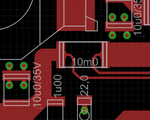Rajnaveen
Member level 2

- Joined
- May 11, 2014
- Messages
- 42
- Helped
- 0
- Reputation
- 0
- Reaction score
- 0
- Trophy points
- 6
- Activity points
- 307
Hi
I am using op amp as an amplifier to amplify a mV signal sensed through a shunt resistance in a solar charger that is integrated with a 5000W inverter . my problem is that when i run load at inverter there is some off set voltage at op amp due to ground difference . how to resolve the issue
.
I am using op amp as an amplifier to amplify a mV signal sensed through a shunt resistance in a solar charger that is integrated with a 5000W inverter . my problem is that when i run load at inverter there is some off set voltage at op amp due to ground difference . how to resolve the issue
.



